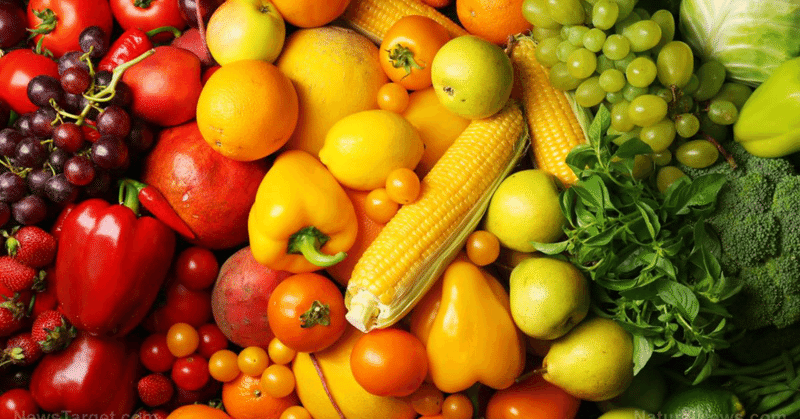
国際金融資本家の悪事と現在の政治状況 その20
世界の食料価格が過去最高に急上昇...終わりが見えない状況に
2021年09月08日(水) by:メアリー・ビジャール
(Natural News) 食糧農業機関(FAO)の新しい報告書は、世界の食料価格が10年近くの高さまで上昇していることを指摘しています。
ローマに本拠地を置く同機関が発表した声明によると、2カ月連続で下落していた世界の食料価格は、砂糖、植物油、穀物の上昇により8月に急上昇した。
価格指数の上昇
価格指数は、世界的に取引されている食料品の国際価格を示すものです。8月の平均値は127.4ポイントで、前月から3.9ポイント、前年同期から31.5ポイント上昇しました。
砂糖価格指数は、ブラジルで農作物に霜害が発生したことにより、食料品価格を最も大きく左右するものとなりました。これに続くのが植物油価格指数で、潜在的な生産量を下回ったため、前月に6.7%上昇しました。
世界第2位のパーム油生産国であるマレーシアは、生産量のパーフェクトストームに直面しており、在庫が過去5年間で最低のレベルにまで引きずり込まれる可能性が高い。
また、半数以上の農園主が、労働者不足のために収穫時期を14日から最大40日に延長せざるを得ず、果実の品質が低下し、房の一部が失われる危険性があると述べています。
「特にサラワクではひどい状況です。特にサラワクではひどい状況で、収穫機の不足により生産量が50%も減少している会社もあります」と匿名を希望するプランテーションマネージャーは語ります。
世界的な干ばつ、不安定な天候、労働力不足、サプライチェーンの混乱などが重なり、過去1年間の食料価格の急激な上昇につながっています。食料品のインフレがすぐに収まる気配はなく、これが新興市場経済の社会経済的混乱を引き起こす可能性がある。(関連記事: Is there's no end to steepeting food prices?)
アメリカやヨーロッパなどの先進国ではまだそれほど影響を受けていませんが、秋にはスーパーマーケットの価格が高騰することが予想されるため、消費者はその違いを実感することになるかもしれません。
アメリカやヨーロッパの一部ではレストランなどが営業を再開していますが、東南アジアなどではデルタ型が蔓延しており、一次生産が抑制されています。また、パンデミックの影響も依然として問題となっています。例えば、COVIDの発生が続いており、一時的な閉鎖や国境の制限を余儀なくされています。場所によっては、米国の記録的な猛暑がもたらす危険な状況など、地域的な問題もあります。
例えば、大豆は干ばつの影響を大きく受けており、米国農務省は8月の生産量予測を前月に比べ180万トン引き下げました。これにより、米国の大豆在庫は8年ぶりの低水準となり、大豆油の輸出も10年ぶりの低水準となる見込みです。
高騰する価格は今後も続く見込み
FAOのシニアエコノミストであるAbdolreza Abbassian氏は、今後も価格の上昇が続くと予想しています。"高価格は通常、農家、生産者が反応するという点で、高価格に対する最良の解決策です。しかし最近では、過去に比べてコントロールしにくい新たな要因が出てきており、それが気象状況です。"
ラボバンクの食品・アグリビジネスリサーチのシニアアナリストであるオスカー・ジャクラ氏は、サプライチェーンに沿ったすべての人がコスト上昇の一部を吸収しており、それは来年も続くと予想されると述べています。
世界の消費者は、COVID-19のパンデミックにより、すでに経済的な不確実性に直面しています。しかし、食用油の価格がさらに上昇すれば、多くの人々の生活に打撃を与えることになります。
さらに、労働者の不足により、賃金の上昇や供給不足など、コストがさらに増加する恐れがあります。これはパンデミックに限ったことではなく、農業部門の労働者数は何十年も前から減少しています。
また、食用油のコストが業者に転嫁され、消費者が主食にお金を払わざるを得ない状況になっているため、価格圧力は今後も上昇する可能性があります。
詳しくはBubble.comをご覧ください。
ソースは以下の通りです。
ZeroHedge.com
BWorldOnline.com 1
BWorldOnline.com 2
原文:
World food prices jump to record highs… with no end in sight
Wednesday, September 08, 2021 by: Mary Villareal
(Natural News) A new report from the Food and Agriculture Organization (FAO) noted that global food prices are on the rise to near-decade highs.
The Rome-based organization released a statement that said after two consecutive months of declines, the world food prices jumped in August due to gains in sugar, vegetable oils, and cereals.
Rise in price index
The price index follows the international prices of globally traded food commodities. It averaged 127.4 points in August, up 3.9 points from the previous month, and 31.5 points from the same period last year.
The Sugar Price Index became the most significant driver of food prices due to the frost damage to crops in Brazil. This is followed by the Vegetable Oil Price Index, which rose 6.7 percent in the last months due to below-potential production.
Malaysia, which is the world’s second-largest producer of palm oil, is facing a perfect storm in production that will likely drag stocks to their lowest levels in five years.
More than half a dozen plantation owners also said that lack of workers forced them to extend their harvesting windows from 14 days to as many as 40 days, which compromises the quality of fruit and risks the loss of some parts of the bunches.
“It is especially bad in Sarawak. Some companies are seeing production falling by 50% because of the shortage of harvesters,” a plantation manager, who requested to remain anonymous, said.
The combination of global droughts, volatile weather, labor shortages, and supply chain disruptions have all contributed to the rapid rise in food prices over the past year. There are no signs of food inflation slowing down any time soon, and this could cause socio-economic turmoil in emerging market economies. (Related: Is there any end to skyrocketing food prices?)
First-world countries like the United States and Europe haven’t been affected as much yet, but consumers may start to see the difference as supermarket prices are expected to jump in the fall.
Even as restaurants and other businesses re-open in the U.S. and parts of Europe, the delta variant is spreading in places such as Southeast Asia, which curbs primary production. Effects of the pandemic are also still causing problems. For instance, COVID outbreaks continue, forcing temporary closures and border restrictions. In some places, there are also problems with local issues such as dangerous conditions brought about by record U.S. heatwaves.
Soybeans, for instance, have been severely affected by the drought, and the USDA lowered its production forecast by 1.8 million tons in August compared to the previous month. This is expected to cut U.S. soybean stocks to eight-year lows, and soy oil exports to decade lows.
Sky-high prices expected to continue
Abdolreza Abbassian, a senior economist at FAO expects prices to continue to rise. “High prices are usually the best solution for high prices in that farmers, producers respond. But of late, there’s a new factor with less control than the past, and that is the weather situation.”
Oscar Tjakra, a senior analyst at food and agribusiness research at Rabobank said that everyone along the supply chain is absorbing some of the higher costs, and that it is expected to continue next year.
Global consumers are already facing economic uncertainties due to the COVID-19 pandemic; however, further increases in edible oil prices will take a toll on many livelihoods.
Moreover, the shortage of workers threatens to further add costs, whether through wage increases or supply shortfalls. This is not expected to end with the pandemic, either: workers employed in the agricultural sector have been falling for decades.
Several countries have already recorded big jumps in fool inflation costs in the past months, and the price pressure may continue to rise as edible oil costs are passed on by suppliers, leaving consumers with little choice, but to pay up for staple goods.
Read more updates at Bubble.com.
Sources include:
ZeroHedge.com
BWorldOnline.com 1
BWorldOnline.com 2
この記事が気に入ったらサポートをしてみませんか?
